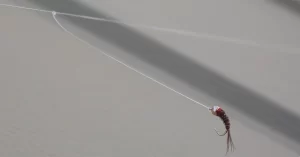Fly fishing often requires quick adaptability to attract various fish species, especially in changing seasons. One trending tactic that can make a big difference is the use of droppers on fly lines. By adding an extra fly to the main line, anglers increase their chances of hooking fish by offering more options. Here’s a comprehensive look at how droppers enhance fly fishing success and ways to set them up effectively.
What Are Droppers in Fly Fishing?
A dropper is an additional fly attached to the leader or tippet line, typically set a few inches to a foot from the main fly. This approach allows anglers to present multiple flies to fish at once, appealing to different feeding preferences. Using droppers can be especially effective in seasonal transitions like autumn, where fish may respond to varied fly patterns.

Why Droppers Are Gaining Popularity Among Fly Fishers
Adding droppers can address common fishing challenges by:
- Increasing Strike Opportunities: Fish can be finicky, especially during peak and off-peak feeding times. A two-fly rig means double the chances of landing a fish.
- Attracting Diverse Species: With droppers, anglers can present both nymphs and dry flies, widening the range of species they might attract.
- Adapting to Fish Behavior: Changing water temperatures and conditions can shift fish behavior. Droppers let anglers adapt by presenting flies that target both surface-feeding and subsurface-feeding fish.
Best Practices for Setting Up Droppers on Fly Lines
- Choose the Right Fly Combination: Pairing a high-visibility dry fly with a natural nymph can attract fish at various depths.
- Decide on Knot Type: The most common method for attaching droppers is the dropper loop knot or surgeon’s knot, which keeps the second fly secure and flexible.
- Select Leader and Tippet Lengths Carefully: The leader length determines how naturally the flies drift. Longer leaders work well in clear, slow-moving water, while shorter leaders are suited for faster currents.
Step-by-Step Guide to Rigging Droppers on a Fly Line
- Set Up the Leader: Attach the main fly to the leader or tippet as usual.
- Add the Dropper Fly: Tie a short piece of tippet to the bend of the main fly’s hook or use a loop knot to attach it to the leader above the main fly.
- Experiment with Dropper Position: Distance between flies can affect presentation; start with a 12-inch gap and adjust based on fish response.
Top Tips for Fishing with Droppers
- Test Fly Combinations: Mixing and matching fly types, like combining a bright attractor pattern with a natural pattern, can improve results in multi-species waters.
- Adjust Based on Water Conditions: Droppers excel in clear water where fish can easily see multiple flies, but in murkier waters, shorter setups with brighter flies can be effective.
- Check Local Regulations: Some areas have regulations on the number of flies allowed on a line, so be sure to follow local fishing guidelines.
Seasons and Situations to Use Droppers for Best Results
Droppers shine in spring and fall, when insects hatch at various depths, luring fish to different feeding zones. During these transitional periods, droppers provide fly anglers with flexibility and versatility to match changing conditions and behaviors.
Image: troutbitten





